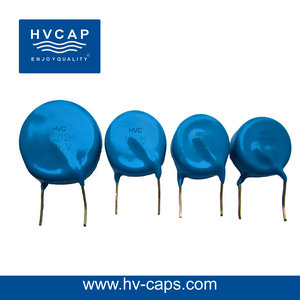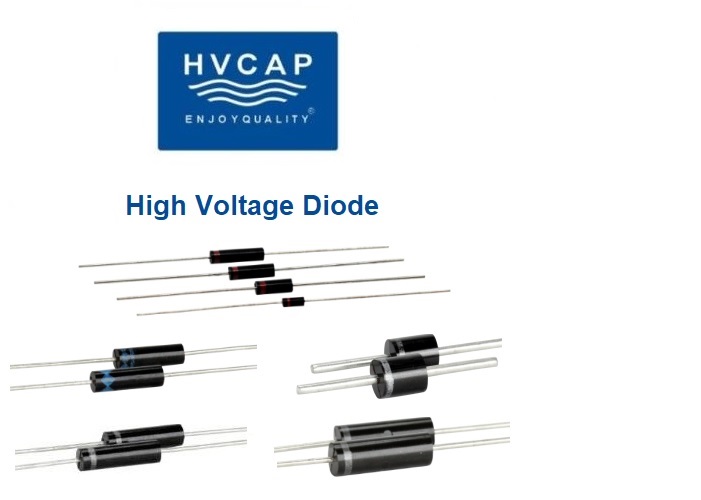Worlds Smallest Tesla Coil — hv-caps.biz
Great for science fairs and small HV experiments, an attention-getting office or bar action decoration, a conversation piece, or other special effects prop. Produces an adjustable repetition of high voltage open-air spark discharges of up to several cm.
Unit is built into a 3 x 2 x 1″ plastic box and is powered by a three wire grounded line cord operating from 110 vac. As a safety measure the output winding is directly connected to the earth grounded green lead of the power cord. This prevents any accidental contact to the 115 vac that could occur by accident or by a circuit fault.
Power and repetition rate are controlled by a combination potentiometer and switch. Output voltage pulses are up to 40 kv at .2 Joules and can be adjusted from a slow to fast pulse rate. Sparks are very audible and visual for the small size of this unit.
|
|
______________________________________________________________________________
The Six-Pack Tesla Coil
The inventions of Nikola Tesla are all around us: radio, AC power, fluorescent lighting, and remote control devices are just a few. Tesla was ahead of his time, in many ways, and his work with high-frequency alternating currents has inspired engineers, scientists, geeks, inventors, artists, dreamers, and (frankly) quacks for more than a century. The Tesla coil is particularly fascinating because of the elemental, visceral nature of the electrical arcs it produces. It’s like watching lightning strike. Tesla himself used these spectacular effects to wow audiences with the wonders of AC electricity.

Since Tesla’s time, hobbyist “coilers” have made many discoveries and improvements to the basic design, achieving bigger sparks with less input current. With the advent of plastics, improved wire insulators, and a better understanding of theory, the modern Tesla coil looks very different from the original. The basic circuit and concepts are the same, but almost everything else is different.
One thing that is the same, in this project, is the capacitor design. Ours is made from glass beverage bottles, very similar to the champagne bottles that Tesla himself often used.
Safety
Along with the wonder and awe of a Tesla coil comes a significant level of danger. It is the responsibility of anyone who builds or operates a Tesla coil to ensure the safety of themselves and anyone who might come near, either during a demonstration or inadvertently. Whenever you approach the coil, unplug the power cord and hang on to the plug end as you work. If the location is not entirely secure, consider adding a safety key switch so you can pocket the key.
A Tesla coil’s high-frequency electrical field can damage or destroy cardiac pacemakers/defibrillators, hearing aids, and other biomedical devices. I’ve never seen this happen, but it’s imperative to warn audiences of the possibility before demonstrations.
Similarly, the Tesla coil can damage other sensitive electronics nearby. I have personally destroyed a stereo receiver, a garage door opener, a wireless phone system, and two PC network cards. It again falls to the maker to make sure that the coil is operated at a sufficient distance from any valuable electronics, flammable materials, pets, and of course small children.
There are many hazards to be aware of and in this single article we cannot cover them all. If in doubt, contact a nearby Tesla hobbyist or an engineer experienced in high-voltage devices and electrical safety. If you have any doubt about your abilities in this area, don’t attempt the build. Period!
DANGER!
- Assume the capacitor is always charged. Capacitors can retain a charge for days. No matter what anyone else tells you, always safely discharge the six-pack capacitor yourself, and jumper it with a sturdy clip lead before touching any of the components. Keep the jumper in place when you’re not operating the coil.
- Do not operate the coil around small children or animals.
- Operate in clear spaces at least 20 feet from flammable materials. The electric field generated by a Tesla coil can create sparks within furniture and in the ceilings of structures. Sparks can ignite combustible solids, liquids, and especially vapors.
- Do not touch the NST terminals. Both sides of the neon sign transformer are “hot.” Some NSTs have exposed primary terminals carrying line voltages. Current at the NST secondary terminals is usually low, but the voltages are high enough to cause painful shocks and secondary injuries from loss of motor coordination.
- Do not stare at the sparks. Electrical arcs in air emit ultraviolet light that can damage eyes and skin on extended exposure. Clear polycarbonate sheet can be used to shield the spark gap and block most of the UV generated by the sparks.
- Do not operate the coil without proper ventilation. Electrical arcs in air produce ozone, nitrogen pentoxide, and several other nitrogen oxides that are hazardous to health. Note that nitrous oxide is not produced.
- Do not operate indoors without ear protection. This Tesla coil can produce hazardous levels of noise. It’s less of a problem outside, but indoors the sound is loud.
How It Works
Fundamentally, a Tesla coil is just a transformer, like the one that steps household electricity down to a voltage suitable for charging your cellphone. All transformers have two coils — a primary and a secondary — and most of those you encounter in daily life transform voltages based on the different numbers of turns in each coil. A Tesla coil works on a slightly different principle, creating the very high voltages needed to produce long arcs in open air mostly through the inductive difference between its primary and secondary coils.
More specifically, a Tesla coil is an air-core, dual-resonant transformer. Air-core means that the coils are hollow, rather than wrapped around metal or ferrite cores as in common transformers. Dual-resonant means that the circuits containing both primary and secondary coils are tuned to “ring” at the same frequency.
The combination of the primary coil (an inductor) and the capacitor (the bottles, in this design) create a resonant LC circuit that “rings” at a particular frequency. This is called the tank circuit.
Since both tank circuit and secondary coil are tuned to the same frequency, they pass energy back and forth when “struck” with an electric impulse. Imagine striking a bell near a drumhead tuned to the same note.
The electrode on the top of the coil is called the top-load. You can imagine the top-load as a capacitor with one side connected to the secondary coil, the other side connected to ground, and the air all around as the insulator between the two “plates.”
This Tesla coil is designed to be powered by plugging into a wall outlet, and uses a neon sign transformer (NST) to step 120V AC up to about 10kV at 25mA–30mA. Solid-state voltage converters are not appropriate for this application, nor are modern NSTs manufactured with ground fault protection circuitry. You’ll need a used or old-stock NST; fortunately these are not hard to find on eBay and, sometimes, Craigslist. Neon shops may have old units hanging around.
Designing the Six-Pack Coil
The math for designing a Tesla coil is not especially difficult, but it can get tedious. Fortunately, coil hobbyist Bart Anderson has paved the way for us with a wonderful JavaScript program called JavaTC. If you’re interested in the math, Bart’s site classictesla.com has resources and links that will lead you as deep as you want to go.
JavaTC was instrumental in designing the six-pack Tesla coil. The output text file describing the six-pack coil is available here.
Spend some time playing with JavaTC, tweaking the specs for the six-pack coil, and you’ll quickly develop a feel for how the various design parameters affect one another. If you have to use a different transformer, make a different top-load, use a different wire gauge or any other major changes, you can use JavaTC’s auto-tuning feature to understand how to modify the design.
Build Your Six-Pack Tesla Coil
First-time “coilers” should follow this build as closely as possible. Use a neon sign transformer rated for 9kV at 25mA, strive for a main tank capacitance as close to 0.005µF as possible, and do not substitute parts if it can be avoided.
Plan your build carefully before you start. Don’t just jump in and start building without reviewing every aspect of the design. High-frequency resonant circuits are very sensitive to small changes, and poor attention to planning can make the tuning process very frustrating.
Craftsmanship is also important. Take your time, particularly with the secondary coil, where a single crossed winding or a skimpy varnish job can easily result in a nonfunctional or very short-lived coil.
Good design, attention to detail, and patient craftsmanship will pay off with a long, noisy spark that draws oohs, aahs, applause, and admiration from everyone who sees it.





